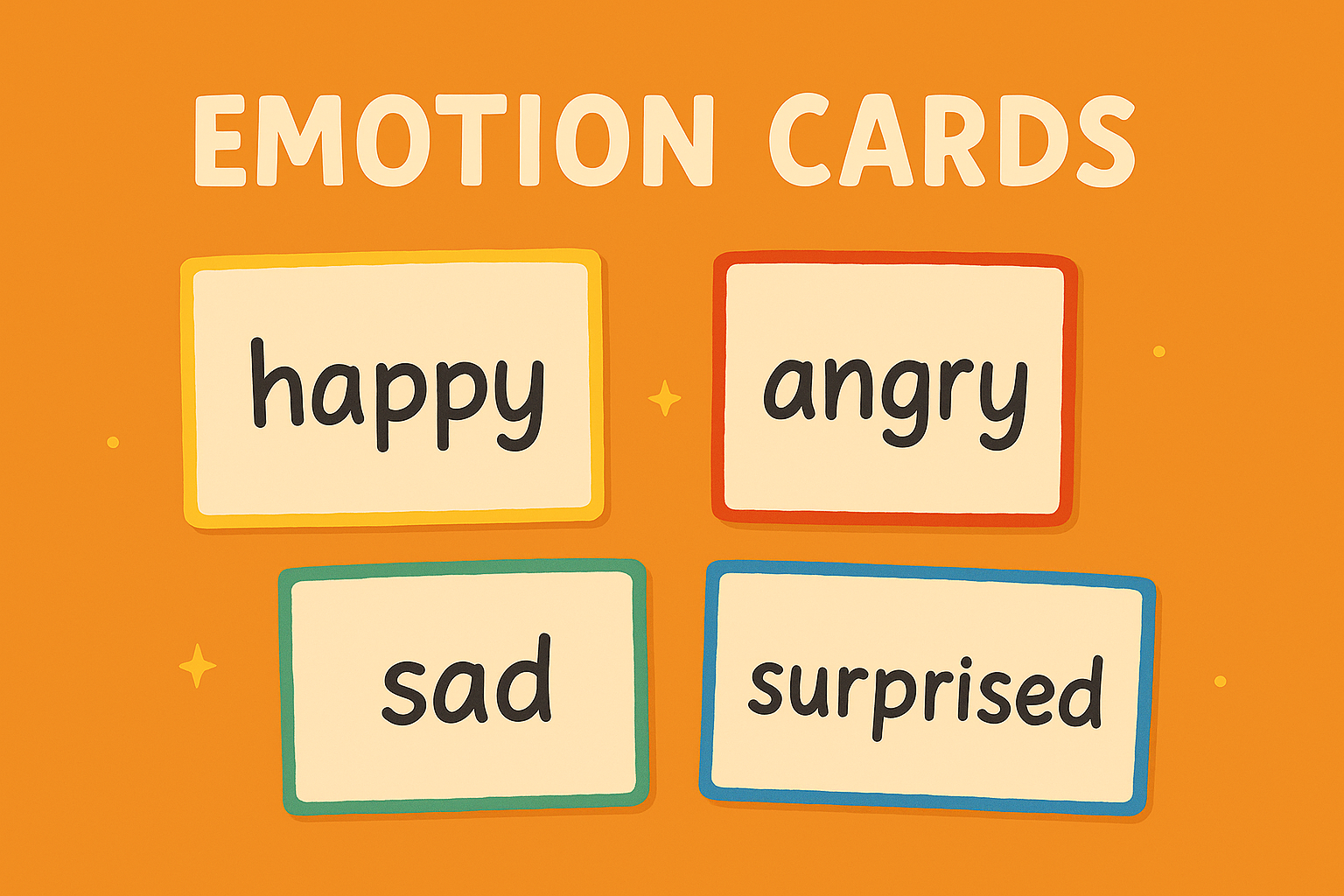Emotion Cards are a simple, thoughtful way to help children explore feelings in a safe and supportive space.
By writing down different emotions on pieces of card, then taking turns to pick one and talk about it, children (and grown-ups!) can build emotional vocabulary, share experiences, and connect more deeply.
This activity helps support emotional intelligence, listening skills, and self-expression—and can be as light or meaningful as the moment calls for. It’s a lovely way for parents, carers, and children to learn more about each other too.
Materials Needed
- Coloured card or plain paper
- Pen, pencil, or marker
- Scissors
Tools Needed
- None
Steps
- Make the Cards
Cut card or paper into equal-sized pieces. Write a different emotion on each one. E.g.- Happy
- Sad
- Angry
- Excited
- Nervous
- Proud
- Scared
- Calm
- Lonely
- Curious
- Frustrated
- Loved
- Mix and Choose
Shuffle the cards and take turns drawing one at random. - Talk About It
Share a time you felt that way or something that makes you feel that emotion. There’s no right or wrong—just sharing and listening. - Encourage Openness
If your child prefers not to share, that’s okay. They might just want to listen or come back to it later. - Keep It Going
Use the cards regularly as part of bedtime chats or quiet moments together.
Variations
- Draw the Emotion: Let children illustrate each feeling card with a face, colour, or scene.
- Feeling Charades: Pick a card and act out the emotion for others to guess.
- Story Starter: Use the chosen emotion as a prompt to make up a short story together.
- Calm-Down Pairing: Create a second set of cards with ways to respond to difficult emotions (e.g. take a breath, ask for help).


Leave a Reply